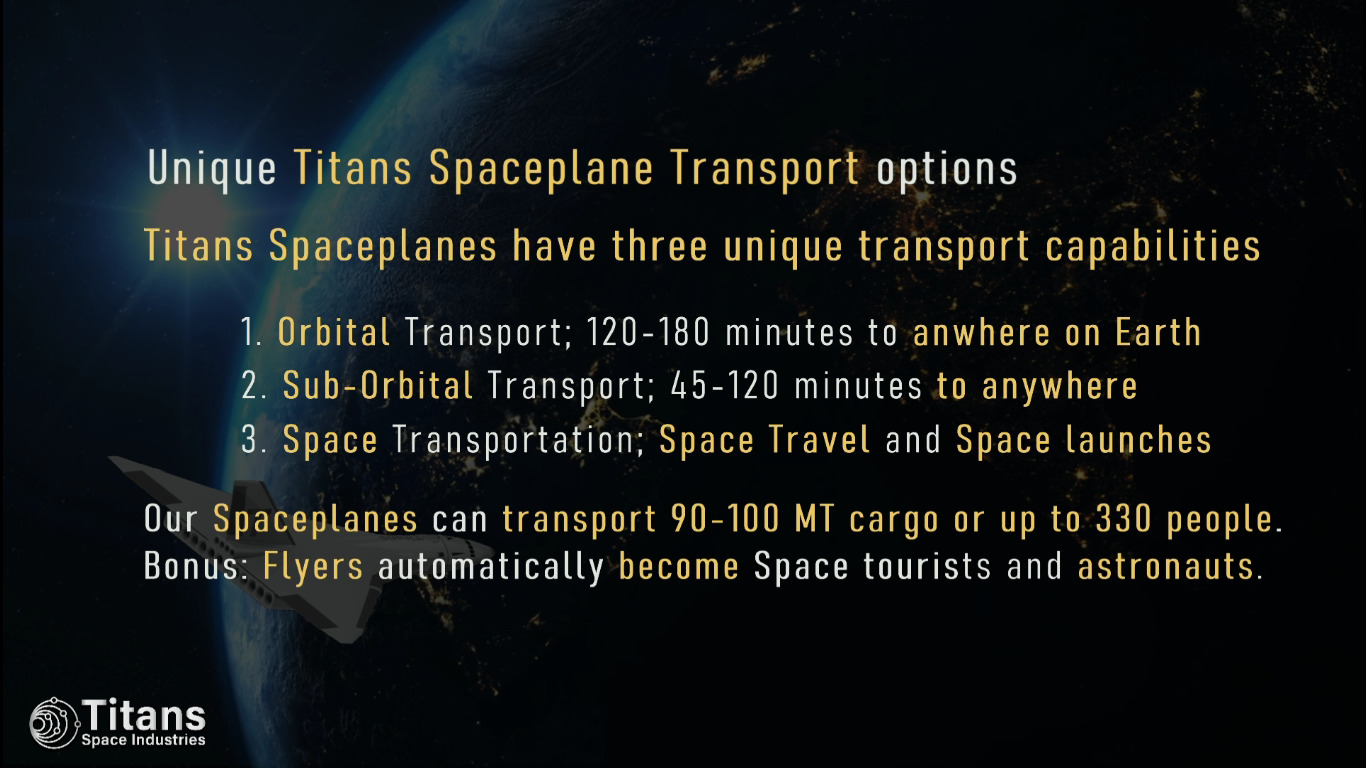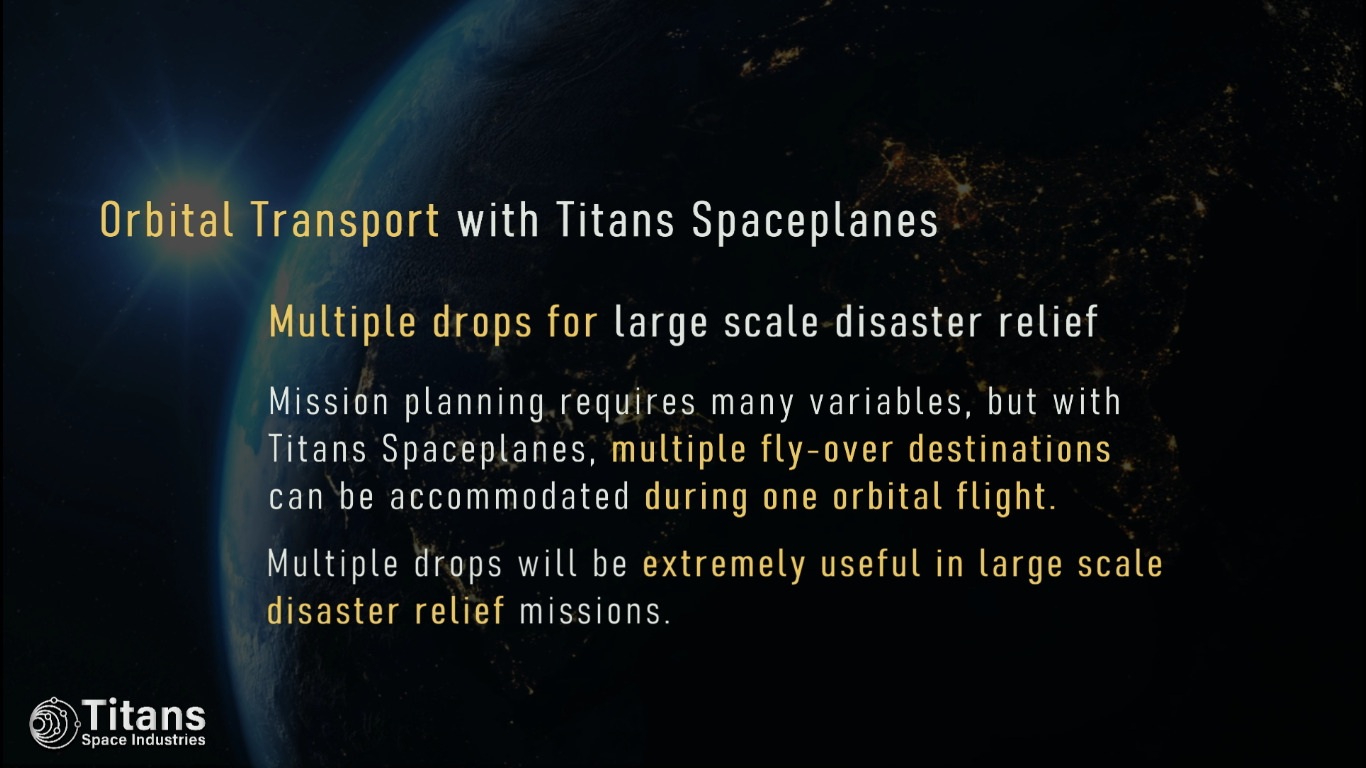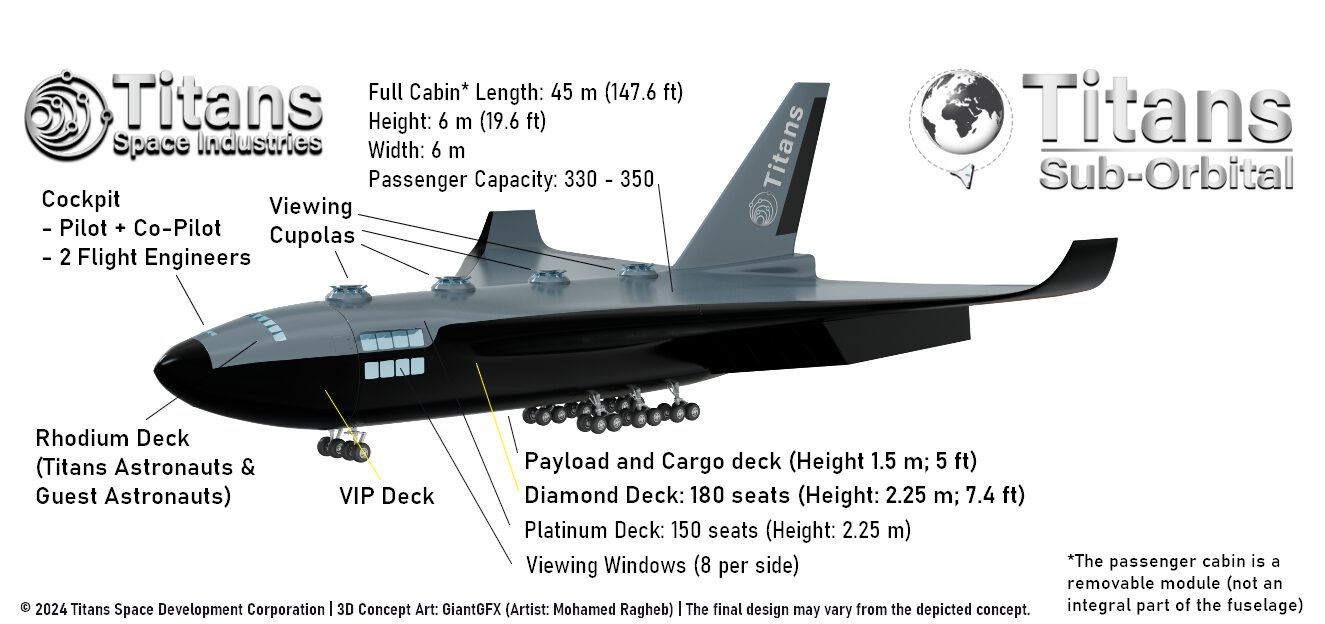- Home
- Spaceplanes
- Spacecraft
- Space Tourism
- Transport
- Our Astronauts
- Moon
- Mars
- FAQs
- News | Library
- About us
Safe & Frequent Space Transport to Low-Earth Orbit and Beyond
Journey Starts with a Spaceplane, not a Vertical Rocket
Titans Spaceplanes
R&D | Space Tourism
Frequency: 1-3 x p/day
Payload: ~100 Tons
3-6 Hrs to Space Station
Pioneering Orbital Transport Beyond LEO With Spaceships

Despite the media hype surrounding rockets like SpaceX’s Starship, routine space transportation, including human space travel, by means of rockets will not reach large numbers, basically due to the inherent risks and limitations of such vehicles.
For large scale space travel and space cargo transport to reach efficiency and safety levels like air travel/air cargo, the vehicles we use must operate like airplanes.
Titans Spaceplanes are the holy grail of aerospace; they are designed as a revolutionary space transportation system that eliminates the need for expensive launch facilities, vehicle assembly buildings, and (expendable or reusable) all-rocket boosters.
A Titans Spaceplane can operate from any (partnered) large airport, and it can carry 15-330 astronauts or a 90-100 ton payload into any 555-km (300 nmi; 344 mi) orbit; it uses multi-cycle airbreather propulsion to reach the top of the troposphere and then ignites its rocket engines to reach Low-Earth Orbit.
For missions requiring higher orbital altitudes, a kit can be installed in the cargo bay with additional propellant for the OMS engines.
The Titans Spaceplanes can also function as a first stage for all kinds of missions, from LEO to Deep Space.

The Titans Spaceplanes are not booster rockets; this eliminates the hazards of the space rockets people are familiar with.
The wings of the Titans Spaceplane also serve as an abort system that allows the Spaceplane to glide to a safe landing.
But there are also a number of unique safety features for the Titans Spaceplanes
Passenger Module (Passenger Cabin)
The Passenger Module is a separate module which mounts to the floor of the cargo bay. This modular approach provides complete isolation of the passengers from smoke and fire in a crash landing as well as allowing the exterior of the Passenger Module to be covered by fireproof ceramic blankets similar to those used on the outside of the space shuttle. The Passenger Module is divided into two decks with each deck having its own tunnel connecting it to the Crew Module/Front Cabin in the nose. Inside the Passenger Module, a spiral staircase connects the upper and lower decks.

Emergency Egress
Normal ingress/egress as well as egress for evacuation is provided by two doors in the nose. The
two viewing cupolas in the roof double as a hatch for emergency egress.
Upholstery and Carpeting
The interior design of the Passenger Module minimizes the chances of fire or toxic smoke through using naturally fire resistant wool carpeting and seat upholstery instead of flammable synthetic fibers.
“Spacepod” Encapsulated Seats
The biggest safety innovation of the Titans Spaceplane is the Spacepod Encapsulated Seats for the Passenger Module. These Spacepod seats use individual clamshell enclosures which are normally open during the flight but in the event of depressurization or other emergency slide down and enclose the seat,
maintaining the passenger in a breathable atmosphere with their own ECLSS system without the discomfort and claustrophobia of an IVA suit. The passenger can also use the clamshell enclosure during the flight for privacy. Instead of overhead bins, each passenger uses a fireproof compartment on the Spacepod to store their carry-on luggage, if any.
IVA Suits for Pilots and Crew
The pilots, stewards, and other flight crew wear IVA suits for the duration of the flight. This allows the pilots to operate the Spaceplane normally while giving stewards the mobility needed for attending to passengers, including verifying that the Spacepod clamshells are properly sealed if needed.

Space transport operations for third parties are operated on a contract basis (e.g. with the miliary or government agencies) for non-Space-tourism purposes. In case of long term commitments, Titans Space can offer steep discounts to these customers.

From Earth's Surface to the Lunar Surface
Accelerating Large-Scale Space Travel by Decades
2: Spaceships
3: Space Stations
4: Lunar transporters










































